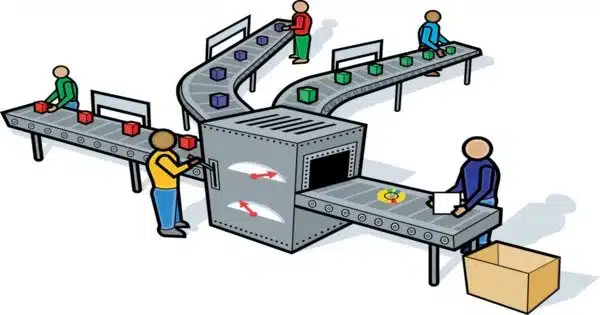Mass production is a manufacturing process that involves the mass manufacture of standardized products on a huge scale. The manufacturing of large quantities of standardized products in a continuous flow, including and especially on assembly lines, is known as flow production or continuous production. This method is distinguished by the efficient production of vast numbers of identical or similar things.
Mass production emerged in the early twentieth century, coinciding with the Industrial Revolution and the advent of assembly line processes. It is one of the three primary manufacturing methods, along with job and batch production.
A 1926 article in the Encyclopaedia Britannica supplement based on correspondence with Ford Motor Company popularized the phrase mass manufacturing. The term was used in the title of a story published before the Britannica article by the New York Times.
Key features of mass production include:
- Standardization: Products are made to conform to specific standards and specifications, ensuring uniformity and interchangeability.
- Assembly Line: The assembly line is a crucial component of mass production. It involves a series of workstations, each responsible for a specific task, and products move along the line as workers or machinery perform their assigned tasks.
- Efficiency: It aims to achieve high efficiency by optimizing production processes, minimizing waste, and reducing production costs per unit.
- Economies of Scale: It takes advantage of economies of scale, meaning that the cost per unit decreases as production volumes increase. This is because fixed costs are spread over a larger number of units.
- Automation: Modern mass production often involves the use of automation and machinery to perform repetitive tasks. This increases efficiency and reduces the need for manual labor in certain processes.
- High Output: Mass production systems are designed to produce goods in large quantities, often resulting in a high output of products in a relatively short period.
- Reduced Cost per Unit: The goal of mass production is to lower the cost per unit by producing goods in large quantities, which helps companies offer products at competitive prices.
The concepts of mass production are applied to a wide range of items, from bulk fluids and particulates (food, fuel, chemicals, and mined minerals) to pieces and assemblies of parts (home appliances and automobiles).
Some mass production techniques, such as standardized sizes and production lines, predate the Industrial Revolution by centuries; however, modern mass production was not possible until the introduction of machine tools and techniques to produce interchangeable parts in the mid-19th century.













